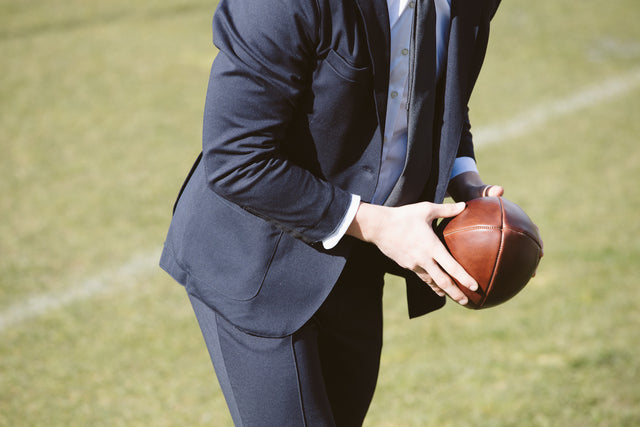GET STRONGER with Bianca Farella
27 year old Bianca Farella is a veteran player from both the Canadian Women’s Sevens and 15s teams, having played at the highest level since 2012. The speed with which Farella is blessed has garnered her a lot of attention on the World Series stage – she is a regular fixture in “dream team” picks. Having lived the Olympic dream in Rio, Farella hopes to repeat and surpass the success of that campaign, this time with a gold medal. Focus is the name of the game for Bianca, who feels that mental preparation is as important as physical. We got in touch with Bianca to learn more about her personal fitness routine and her experience training in the centralization program created by her Strength and Conditioning coach, Steve MacKinnon.
In your opinion, what is the most important fitness exercise for a rugby player?
BF: A rugby 7s athlete needs a lot of different types of training to be a star on the World Series. Our training includes speed training 3x per week, weight training 3x per week, rugby skills practice every day and rugby-related fitness is incorporated on 3-4 of those days. I’d say to be a very successful rugby 7s player, you would need a skillset that includes high-speed (whether at top-speed or acceleration-based), sharp rugby skill and game sense, high aerobic fitness, and high anaerobic fitness. The good news is the games are only 14 minutes, but with all that space to cover we try to be as efficient as we can with our fitness.
How often do you weight train vs. train cardio?
BF: We weight train 3 times per week (usually Monday, Thursday, and Fridays), and we train our fitness under rugby-fatigue. We play rugby-based games to train our fitness so that we are able to perform our skills under fatigue. This occurs 2-3 times per week.
What does your daily eating pattern typically look like?
BF: I have 3 meals a day, with snacks and shakes scattered throughout the day as well. My eating routine is: breakfast around 8am, snack around 10:45am, lunch at 12:30pm, snack at 2pm and at 4pm, dinner around 7pm. My eating routine is not etched in stone but my body craves food soon after a session.
What is your pre-workout meal?
BF: We have lunch right before our weights session, but I often have a carb-protein shake during my weights which has really helped my training. I find that I get pretty hungry during weights sessions so this carb-protein shake helps me with my energy levels, especially because our sessions are usually 2+ hours long.
You had to undergo the same shoulder surgery in 2015 and in 2017 which forced you to miss the Pan Am Games, what was the recovery process like? How did you have to modify your fitness routine during this time?
BF: Right when I got hurt I looked into buying a lot of anti-inflammatory foods, but what I didn’t realize was that my training would still be moderate to high on most days so my eating routine stayed very similar. I still had recovery needs from high training that I had to perform even though my shoulder was recovering. The good thing about upper-body injuries is that you can still run to maintain fitness!
How do you incorporate injury prevention into your workouts to avoid future injuries?
BF: We do accessory work during our weights sessions that target our past injuries. Despite being back on the pitch after a few injuries, it does not mean your body is in perfect form. It’s all about strengthening those weaknesses to prevent further injury.
How important is goal setting to reaching your fitness goals?
BF: Our fitness goals depend on the training block we are in. Ideally we are at peak fitness when we are at a competition or at the Olympic Games this summer. There will be fitness testing involved in checking that we have reached those goals, but at the end of the day it comes down to who played the best rugby and won the game.
How has your fitness journey changed throughout your career?
BF: When I first started playing 7s I was already very fast and played wing mostly, but I was also much lighter. After putting on a lot of muscle in the last 8 years, I had to learn how to use my weight to my advantage and still be quick. Thankfully I got a lot fitter over the years and was able to learn how to be quick on my feet at a heavier weight as well.
Do you think there’s a difference in the way men vs. women have to train in the sport of rugby?
BF: I think it is similar in how men and women train. It comes down to empowering your strengths and working on your weaknesses, and developing team chemistry to play great rugby.
What is your personal favourite type of fitness?
BF: I enjoy fitness sessions that incorporate a variety of movements. I enjoy circuits that rotate on different machines, and I also enjoy team relay races. We sometimes do a fitness drill where we have to hit a bag, get up again, and sprint, which is fun and applicable to rugby. Performing our skills under fatigue is a great way to develop our game fitness.
If you weren’t a professional rugby player, what would be your dream job?
BF: There are so many great things out there! Something involving environmental sustainability and restoration, or saving endangered animals! I love the outdoors!
What is your irrational fear?
BF: I have an irrational fear that artificial intelligence will take over human intelligence… I know it’s crazy.
What is your guilty pleasure?
BF: I love chocolate and seeing how long I can stay in PJs/sweatpants on the weekend!


